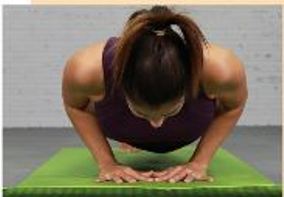By Cheryl Alker
It is not a secret that movement is generally considered one of the cornerstones of good health. The World Health Organization states that adults between the ages of 18-64 should complete at least 150 minutes of moderate intensity aerobic physical activity throughout the week or at least 75 minutes of vigorous intensity aerobic physical activity throughout the week. Balance, coordination and stretching should be completed for approximately 30 minutes per week whilst muscle strengthening activities should be done involving major muscle groups on two or more days a week.
Whilst the times are pretty easy to understand it might be helpful if we could define what type of movement is indicated as real exercise as opposed to general movement. Also what should we be aiming for to achieve optimal health and longevity?

Movement in general can be divided into two major classifications: general daily activity and exercise. General daily activity, which is often referred to as ‘Activities of Daily Living’ (ADL), includes sweeping or mopping the floor, making the bed, dusting, carrying the groceries and even collecting mail from the mailbox!
Exercise is a specific type of activity with a specific fitness goal which includes improved muscular strength and endurance, improved cardiovascular output, improved mobility and flexibility as well as improved sports specific skills.
Activities of Daily Living
For ADL to be effective an hour per day is recommended. This will ultimately help to maintain and improve our circulation and keep our metabolism firing. Research also suggests that in fact getting your activity in small chunks throughout the day may actually be more beneficial to good health and a long life span than performing it all at once.
Exercise
Exercise definitely offers specific benefits that ADL cannot provide. Improving cardiovascular output means that the heart and lungs need to be challenged with sustained aerobic activity. Muscular strength and endurance will be improved by lifting weights or using your own body weight such as push-ups, squats, lunges, planks etc. Regular stretching will improve the mobility and functionality of the joints and general balance work can be undertaken easily on a daily basis at home.
To achieve those 10 weekly hours there are a few key ingredients to bear in mind when designing your life-giving movement program.
- Make sure you are in good overall health and have received adequate medical clearance before undertaking your program.
- Understand that daily activity is essential and nonnegotiable. You can’t sit idle for 4 days and then crash the hours into 3 days.
- Find the types of movements that you can easily accomplish daily and ensure your chosen exercise plan is something you enjoy. You are setting yourself up for failure if you dread even starting. Remember exercise and movement doesn’t all have to be blood, sweat and tears!

